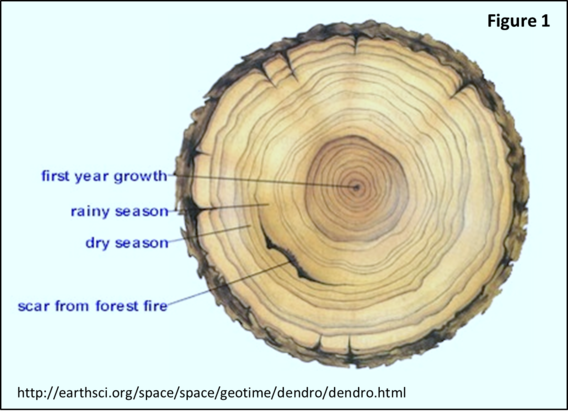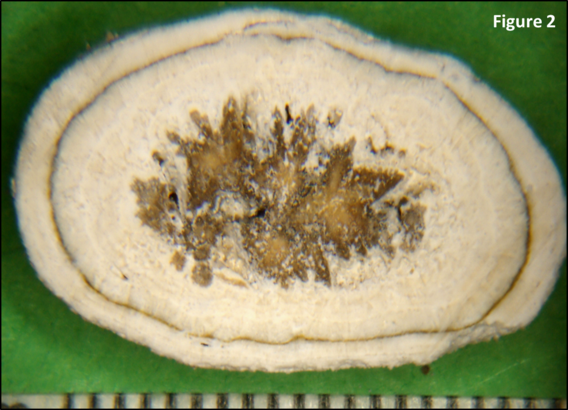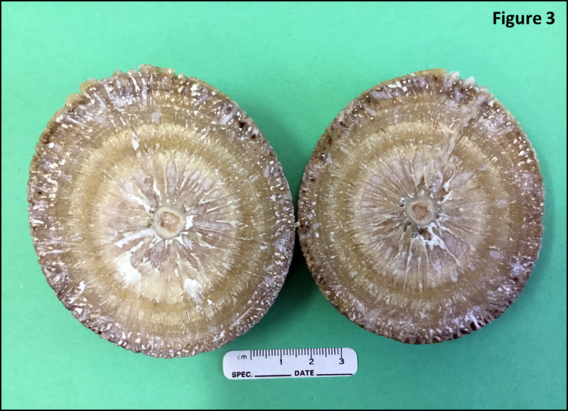Image of the month
The rings of Saturn

Tree-ring dating, dendrochronology, is the study of climate and environmental changes as recorded by the growth rings of a tree. These concentric rings can be wide, indicating a wet season of rapid growth, narrow indicating a dry season of slow growth, or blemished, indicating fire or insect damage (Figure 1).

A similar analogy, urochronology, can be used to tell the life-story of uroliths. Figure 2 is a urolith from Saturn, a female/spayed, Jack Russell terrier. The center or origin of the urolith is calcium oxalate indicating excessive urinary calcium excretion (hypercalciuria) resulting from metabolic, genetic, dietary or idiopathic causes. The white layer is struvite indicating urinary tract infection caused by urease producing bacteria. Staphylococcus and Proteus spp. are common examples. Next, a dark narrow band of calcium oxalate is repeated indicating a period of antibiotic clearance of bacteria but without control of hypercalciuria. Finally, the struvite returns in the outer layer because antibiotics were prematurely stopped.

Figure 3 is a bladder stone from a female Labrador retriever. The center is composed of calcium phosphate carbonate and the remaining outer layers are struvite. Both minerals are infection induced. The wide layers likely represent periods of rapid growth and the narrow layers are periods of slower growth. Reading the layers of bladder stones provide a glimpse into the climate in the urinary tract during formation. This story of urochronology can help determine therapy needed to minimize recurrence.
For additional information see our Canine Compound Urolith Recommendations.